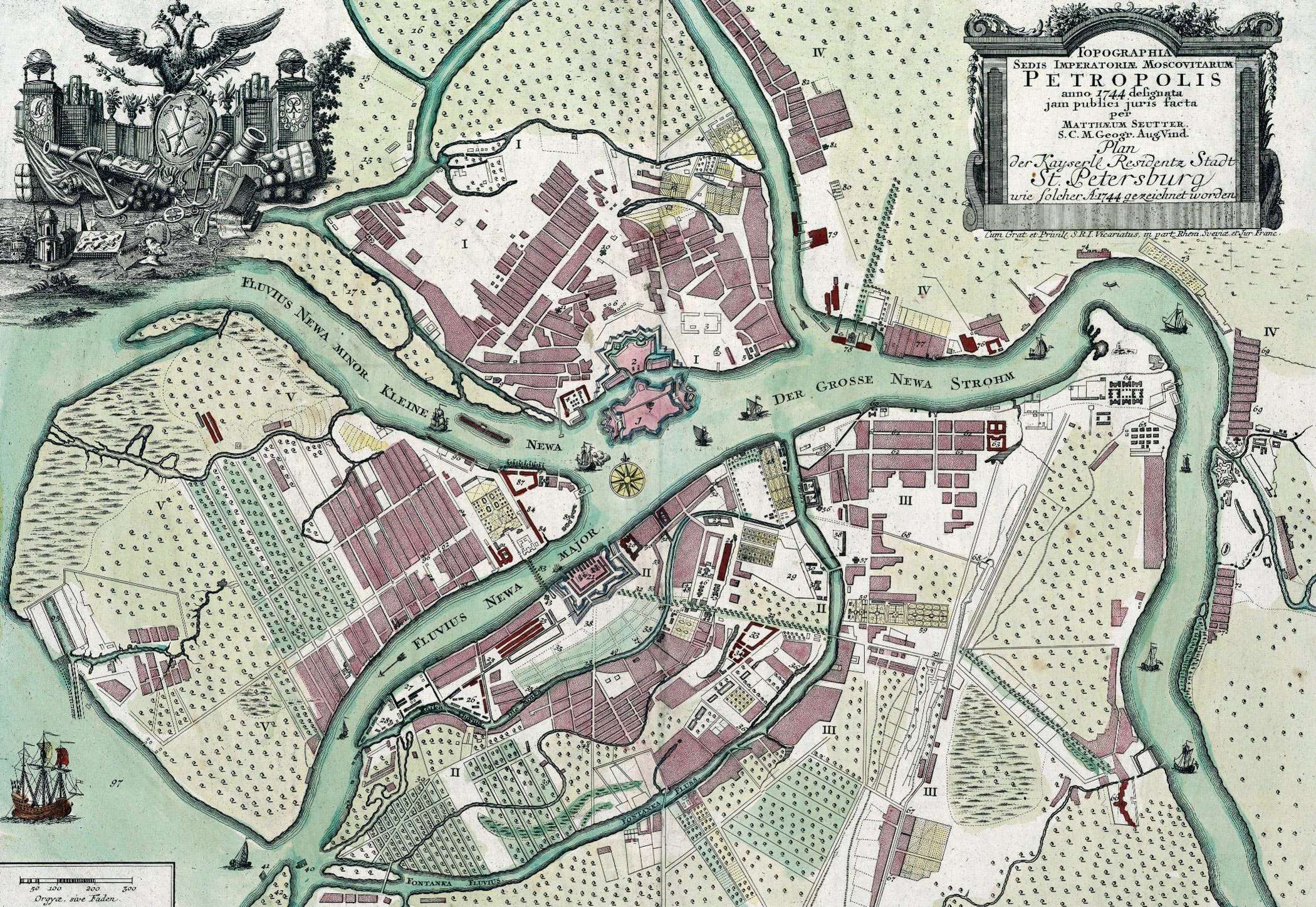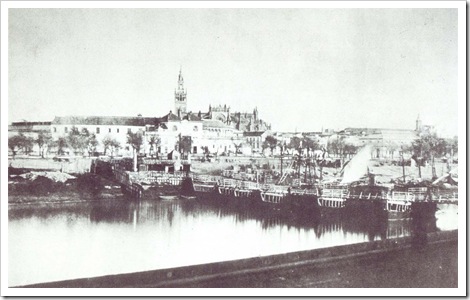|
Ushakovsky Bridge
Ushakovsky Bridge (russian: –£—à–∞–∫–æ–≤—Å–∫–∏–π –º–æ—Å—Ç " Ushakov's Bridge") (previously known as Stroganovsky Bridge (russian: –°—Ç—Ä–æ–≥–∞–Ω–æ–≤—Å–∫–∏–π –º–æ—Å—Ç " Stroganov's Bridge")) is a bridge spanning the Bolshaya Nevka River in Saint Petersburg, Russia named for Admiral Fyodor Ushakov. Originally built in 1786 as a floating pontoon bridge, the bridge was rebuilt between 1847 and 1853 as a multi-span wooden bridge. The bridge was refitted in 1906, 1911, and 1935. The current version of the bridge was constructed between 1953 and 1955. The bridge currently contains 11 spans with the central span being a double-leaf rolling lift. The other spans are bridged over with continuous beams. The bridge's footing is faced with granite. The bridge is long with approaches and wide. See also * List of bridges in Saint Petersburg There are more than 342 bridges in the city limits of Saint Petersburg, Russia. This is a partial list of the most famous ones. Peter the Great was de ... [...More Info...] [...Related Items...] OR: [Wikipedia] [Google] [Baidu] |
Sankt-Peterburg Avgust2013 PetrogradskStoronal 211
Saint Petersburg ( rus, links=no, –°–∞–Ω–∫—Ç-–ü–µ—Ç–µ—Ä–±—É—Ä–≥, a=Ru-Sankt Peterburg Leningrad Petrograd Piter.ogg, r=Sankt-Peterburg, p=Ààsankt p ≤…™t ≤…™rÀàburk), formerly known as Petrograd (1914‚Äì1924) and later Leningrad (1924‚Äì1991), is the second-largest city in Russia. It is situated on the Neva River, at the head of the Gulf of Finland on the Baltic Sea, with a population of roughly 5.4 million residents. Saint Petersburg is the fourth-most populous city in Europe after Istanbul, Moscow and London, the most populous city on the Baltic Sea, and the world's northernmost city of more than 1 million residents. As Russia's Imperial capital, and a historically strategic port, it is governed as a federal city. The city was founded by Tsar Peter the Great on 27 May 1703 on the site of a captured Swedish fortress, and was named after apostle Saint Peter. In Russia, Saint Petersburg is historically and culturally associated with th ... [...More Info...] [...Related Items...] OR: [Wikipedia] [Google] [Baidu] |
Bolshaya Nevka River
The Great Nevka or Bolshaya Nevka () is an arm of the Neva that begins about below the Liteyny Bridge in Saint Petersburg. Attractions * Bridges ** Samson Bridge ** Grenadiers Bridge ** Kantemirovsky Bridge ** Ushakovsky Bridge ** 3rd Yelagin Bridge * Saint Petersburg TV Tower * Russian cruiser ''Aurora'' * Lopukhinsky Garden * Kamenny Island Palace * Maritime Victory Park * Saint Petersburg Botanical Garden * Monument to Alfred Nobel See also * List of bridges in Saint Petersburg There are more than 342 bridges in the city limits of Saint Petersburg, Russia. This is a partial list of the most famous ones. Peter the Great was designing the city as another Amsterdam and Venice, with canals instead of streets and citizens sk ... References Rivers of Saint Petersburg Distributaries of the Neva {{Russia-river-stub ... [...More Info...] [...Related Items...] OR: [Wikipedia] [Google] [Baidu] |
Saint Petersburg
Saint Petersburg ( rus, links=no, –°–∞–Ω–∫—Ç-–ü–µ—Ç–µ—Ä–±—É—Ä–≥, a=Ru-Sankt Peterburg Leningrad Petrograd Piter.ogg, r=Sankt-Peterburg, p=Ààsankt p ≤…™t ≤…™rÀàburk), formerly known as Petrograd (1914‚Äì1924) and later Leningrad (1924‚Äì1991), is the List of cities and towns in Russia by population, second-largest city in Russia. It is situated on the Neva River, at the head of the Gulf of Finland on the Baltic Sea, with a population of roughly 5.4 million residents. Saint Petersburg is the List of European cities by population within city limits, fourth-most populous city in Europe after Istanbul, Moscow and London, the List of cities and towns around the Baltic Sea, most populous city on the Baltic Sea, and the world's List of northernmost items#Cities and settlements, northernmost city of more than 1 million residents. As Russia's Imperial capital, and a Ports of the Baltic Sea, historically strategic port, it is governed as a Federal cities of Russia, federal city. ... [...More Info...] [...Related Items...] OR: [Wikipedia] [Google] [Baidu] |
Fyodor Ushakov
Fyodor Fyodorovich Ushakov ( rus, –§—ë–¥–æ—Ä –§—ë–¥–æ—Ä–æ–≤–∏—á –£—à–∞–∫–æÃÅ–≤, p= ä Ç…êÀàkof; – ) was an 18th century Russian naval commander and admiral. He is notable for winning every engagement he participated in as the Admiral of the Russian fleet. Life and naval career Ushakov was born in the village of Burnakovo in the Yaroslavl gubernia, to a modest family of the minor nobility. His father, Fyodor Ignatyevich Ushakov, was a retired sergeant of the Preobrazhensky regiment of the Russian Imperial guards.–û–≤—á–∏–Ω–Ω–∏–∫–æ–≤ –í.–î–ê–¥–º–∏—Ä–∞–ª –§.–§. –£—à–∞–∫–æ–≤: –∞—Ä—Ö–∏–≤–Ω—ã–µ –¥–æ–∫—É–º–µ–Ω—Ç—ã –ø—Ä–æ—Ç–∏–≤ –ª–µ–≥–µ–Ω–¥/–í–µ—Å—Ç–Ω–∏–∫ –∞—Ä—Ö–∏–≤–∏—Å—Ç–∞. ‚Ññ2, 2012. By the time Fyodor Ushakov submitted his statement of background (''skaska'') to the military, his family had not been officially confirmed in the so-called 'dvoryanstvo', yet they surely belonged to serving gentry. In the submission Ushakov stated that he neither had a coat-of-arms, nor a r ... [...More Info...] [...Related Items...] OR: [Wikipedia] [Google] [Baidu] |
Stroganov
The Stroganovs or Strogonovs (russian: link=no, Стро́гановы, Стро́гоновы), French spelling: Stroganoff, were a family of highly successful Russian merchants, industrialists, landowners, and statesmen. From the time of Ivan the Terrible () they were the richest businessmen in the Tsardom of Russia. They financed the Russian conquest of Siberia (1580 onwards) and Prince Pozharsky's 1612 reconquest of Moscow from the Poles. The Stroganov School of icon-painting (late 16th and 17th centuries) takes its name from them. The most recent common ancestor of the family was Fyodor Lukich Stroganov (died 1497), a salt industrialist. His elder son, Vladimir, became the founder of a branch whose members eventually became state peasants; this lineage continues. The lineage from Fyodor Lukich Stroganov's youngest son, Anikey (1488–1570), died out in 1923. Anikey's descendants became members of the high Russian nobility under the first Romanovs (tsars from 1613 onwa ... [...More Info...] [...Related Items...] OR: [Wikipedia] [Google] [Baidu] |
Russia
Russia (, , ), or the Russian Federation, is a transcontinental country spanning Eastern Europe and Northern Asia. It is the largest country in the world, with its internationally recognised territory covering , and encompassing one-eighth of Earth's inhabitable landmass. Russia extends across eleven time zones and shares land boundaries with fourteen countries, more than any other country but China. It is the world's ninth-most populous country and Europe's most populous country, with a population of 146 million people. The country's capital and largest city is Moscow, the largest city entirely within Europe. Saint Petersburg is Russia's cultural centre and second-largest city. Other major urban areas include Novosibirsk, Yekaterinburg, Nizhny Novgorod, and Kazan. The East Slavs emerged as a recognisable group in Europe between the 3rd and 8th centuries CE. Kievan Rus' arose as a state in the 9th century, and in 988, it adopted Orthodox Christianity from the ... [...More Info...] [...Related Items...] OR: [Wikipedia] [Google] [Baidu] |
Pontoon Bridge
A pontoon bridge (or ponton bridge), also known as a floating bridge, uses floats or shallow- draft boats to support a continuous deck for pedestrian and vehicle travel. The buoyancy of the supports limits the maximum load that they can carry. Most pontoon bridges are temporary and used in wartime and civil emergencies. There are permanent pontoon bridges in civilian use that can carry highway traffic. Permanent floating bridges are useful for sheltered water crossings if it is not considered economically feasible to suspend a bridge from anchored piers. Such bridges can require a section that is elevated or can be raised or removed to allow waterborne traffic to pass. Pontoon bridges have been in use since ancient times and have been used to great advantage in many battles throughout history, such as the Battle of Garigliano, the Battle of Oudenarde, the crossing of the Rhine during World War II, the Iran–Iraq War's Operation Dawn 8, and most recently, in the 2022 Ru ... [...More Info...] [...Related Items...] OR: [Wikipedia] [Google] [Baidu] |
Timber Bridge
A timber bridge or wooden bridge is a bridge that uses timber or wood as its principal structural material. One of the first forms of bridge, those of timber have been used since ancient times. History The most ancient form of timber bridge is the log bridge, created by felling a tree over a gap needing to be crossed. Among the oldest timber bridges is the Holzbrücke Rapperswil-Hurden crossing upper Lake Zürich in Switzerland; the prehistoric timber piles discovered to the west of the Seedamm date back to 1523 B.C. The first wooden footbridge led across Lake Zürich, followed by several reconstructions at least until the late 2nd century AD, when the Roman Empire built a wooden bridge. Between 1358 and 1360, Rudolf IV, Duke of Austria, built a 'new' wooden bridge across the lake that was used until 1878 – measuring approximately in length and wide. On April 6, 2001, the reconstructed wooden footbridge was opened, being the longest wooden bridge in Switzerland. The Kap ... [...More Info...] [...Related Items...] OR: [Wikipedia] [Google] [Baidu] |
Bascule Bridge
A bascule bridge (also referred to as a drawbridge or a lifting bridge) is a moveable bridge with a counterweight that continuously balances a span, or leaf, throughout its upward swing to provide clearance for boat traffic. It may be single- or double-leafed. The name comes from the French term for balance scale, which employs the same principle. Bascule bridges are the most common type of movable span because they open quickly and require relatively little energy to operate, while providing the possibility for unlimited vertical clearance for marine traffic. History Bascule bridges have been in use since ancient times, but until the adoption of steam power in the 1850s, very long, heavy spans could not be moved quickly enough for practical application. Types There are three types of bascule bridge and the counterweights to the span may be located above or below the bridge deck. The fixed- trunnion (sometimes a "Chicago" bascule) rotates around a large axle that raises the ... [...More Info...] [...Related Items...] OR: [Wikipedia] [Google] [Baidu] |
List Of Bridges In Saint Petersburg
There are more than 342 bridges in the city limits of Saint Petersburg, Russia. This is a partial list of the most famous ones. Peter the Great was designing the city as another Amsterdam and Venice, with canals instead of streets and citizens skillful in sailing. Initially, there were only about ten bridges constructed in the city, mainly across ditches and minor creeks. By Peter's plans, in the summer months, the citizens were supposed to move around in boats, and in the winter months when the water froze to move in sledges. However, after Peter's death, new bridges were built, as it was a much easier way of transportation. Temporary ponton bridges were used in the summertime. The first permanent bridge of bricks and stones across the main branch of the Neva river appeared in 1850. Today, there are more 342 bridges over canals and rivers of various sizes, styles and constructions, built at different periods. Some of them are small pedestrian bridges, such as Bank and Lion bridge ... [...More Info...] [...Related Items...] OR: [Wikipedia] [Google] [Baidu] |
Cultural Heritage Monuments Of Regional Significance In Saint Petersburg
Culture () is an umbrella term which encompasses the social behavior, institutions, and norms found in human societies, as well as the knowledge, beliefs, arts, laws, customs, capabilities, and habits of the individuals in these groups.Tylor, Edward. (1871). Primitive Culture. Vol 1. New York: J.P. Putnam's Son Culture is often originated from or attributed to a specific region or location. Humans acquire culture through the learning processes of enculturation and socialization, which is shown by the diversity of cultures across societies. A cultural norm codifies acceptable conduct in society; it serves as a guideline for behavior, dress, language, and demeanor in a situation, which serves as a template for expectations in a social group. Accepting only a monoculture in a social group can bear risks, just as a single species can wither in the face of environmental change, for lack of functional responses to the change. Thus in military culture, valor is counted a ... [...More Info...] [...Related Items...] OR: [Wikipedia] [Google] [Baidu] |





